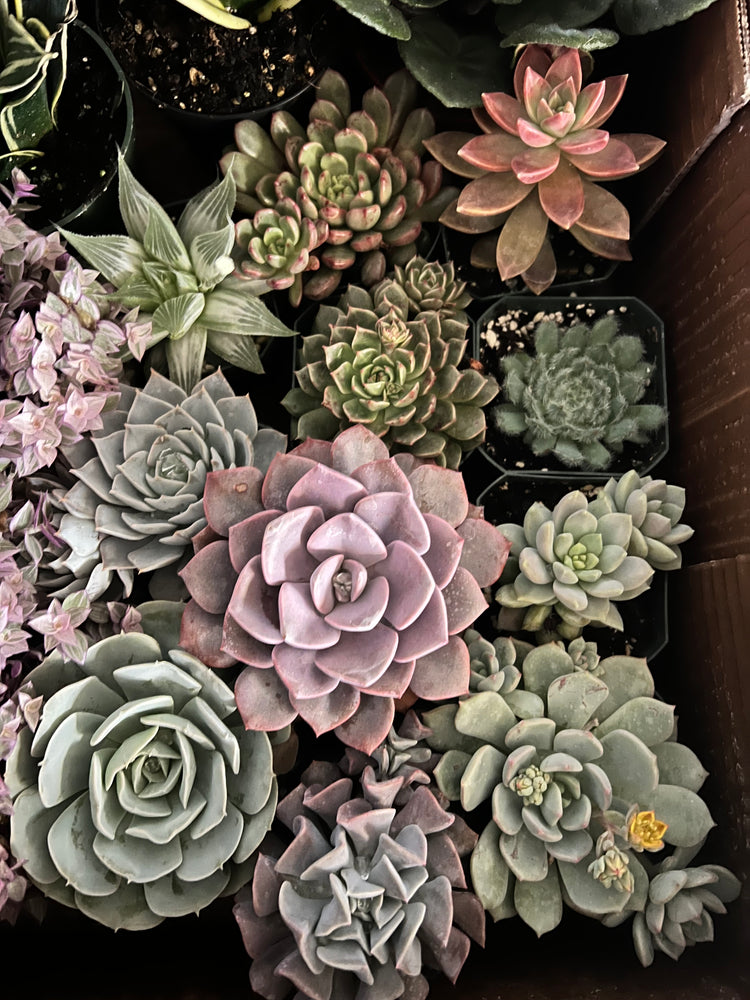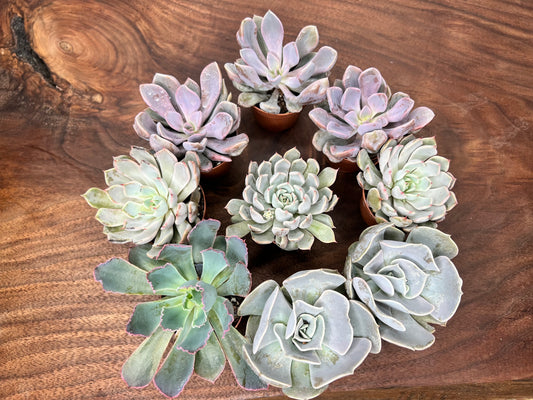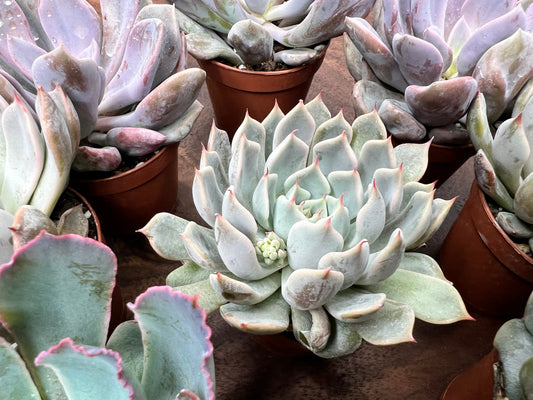Collection: Echeveria
Echeveria succulents are fairly common outdoors, but in the last few years, they've become trendy modern indoor houseplants.
Although native to semi-desert areas of Central America, Mexico and northwestern South America, they still do remarkably well as indoor plants. Like many other small succulents, it's common to find them being grown in unusual and visually arty pots and containers.
The Echeveria is a fairly small houseplant but is still robust and easy going. You can forget to water them for a month and they'll not be too grumpy about it. They take periods of neglect as a personal challenge.
Although to really make them shine, you need to care for them properly and I've put together a complete Echeveria care guide below to teach you what to do.
The leaves come in many different colors, from plain greens to really showy colors. These leaves grow to form a rosette shape that hardly changes during its whole life.
Almost all Echeveria plants love bright light with some sunlight. Go for a sunny window whenever you can.
They will always struggle in low light conditions so avoid these spots. If you can't, then you'll need a grow light.
Direct, intense sunlight can harm plants not used to the intensity. Insufficient water can also contribute to the leaves being more susceptible to sun damage.
Out in their natural habitat many succulents are adapted to heavy downpours and then a fairly long period before the next lot of rain. Their physical traits which you can easily see, such as the thick fleshy leaves and the way they direct water directly down to the roots all help with this.
Echeveria like a good deep through watering occasionally then a wait until they dry out, either mostly or completely. They aren't cacti though, so they shouldn't be deprived of water for excessive periods. As a rough guide I treat mine as follows:
- From Spring to Summer water deeply and regularly whenever the soil fully dries out.
- From late Fall to Winter, water less deeply and wait until the soil dries out fully then at least a a week on top.

-
Echeveria (each)
Vendor:The Rooted Plant ShopRegular price $9.50 USDRegular priceUnit price / per



